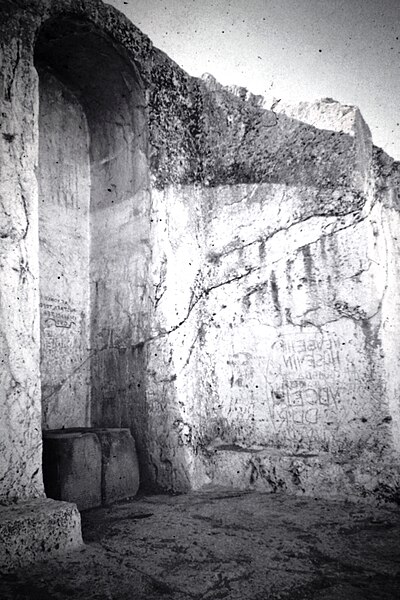In the Book of Genesis, the mountains of Ararat is the term used to designate the region in which Noah's Ark comes to rest after the Great Flood. It corresponds to the ancient Assyrian term Urartu, an exonym for the Armenian Kingdom of Van.
Depiction of Noah's ark landing on the "mountains of Ararat", from the North French Hebrew Miscellany (13th century)
Urartu was an Iron Age kingdom centered around Lake Van in the Armenian Highlands. It extended from the eastern bank of the upper Euphrates River to the western shores of Lake Urmia and from the mountains of northern Iraq to the Lesser Caucasus Mountains. Its kings left behind cuneiform inscriptions in the Urartian language, a member of the Hurro-Urartian language family. Since its re-discovery in the 19th century, Urartu, which is commonly believed to have been at least partially Armenian-speaking, has played a significant role in Armenian nationalism.
Fragment of a bronze helmet from Argishti I's era. The "tree of life", popular among the ancient societies, is depicted. The helmet was discovered during the excavations of the fortress Of Teyshebaini on Karmir-Blur (Red Hill).
Niche and base for a destroyed Urartian stele, Van citadel, 1973.
Urartian stone arch near Van, 1973. [citation needed]
Urartian tomb complex, Van citadel, 1973.




![Urartian stone arch near Van, 1973. [citation needed]](https://upload.wikimedia.org/wikipedia/commons/thumb/a/a7/Urartian_arch_near_Van._1973.jpg/640px-Urartian_arch_near_Van._1973.jpg)
